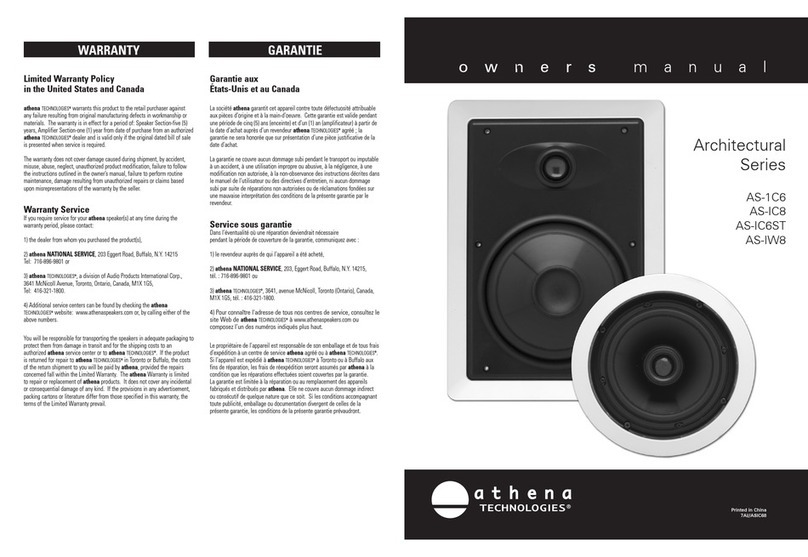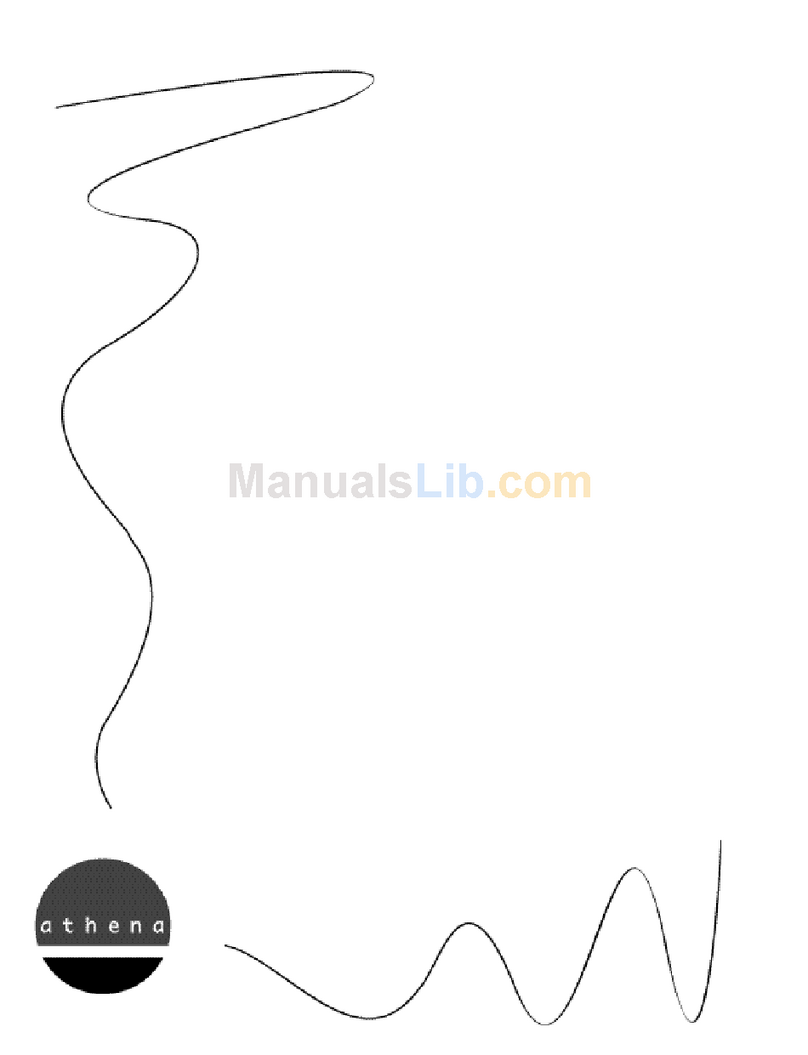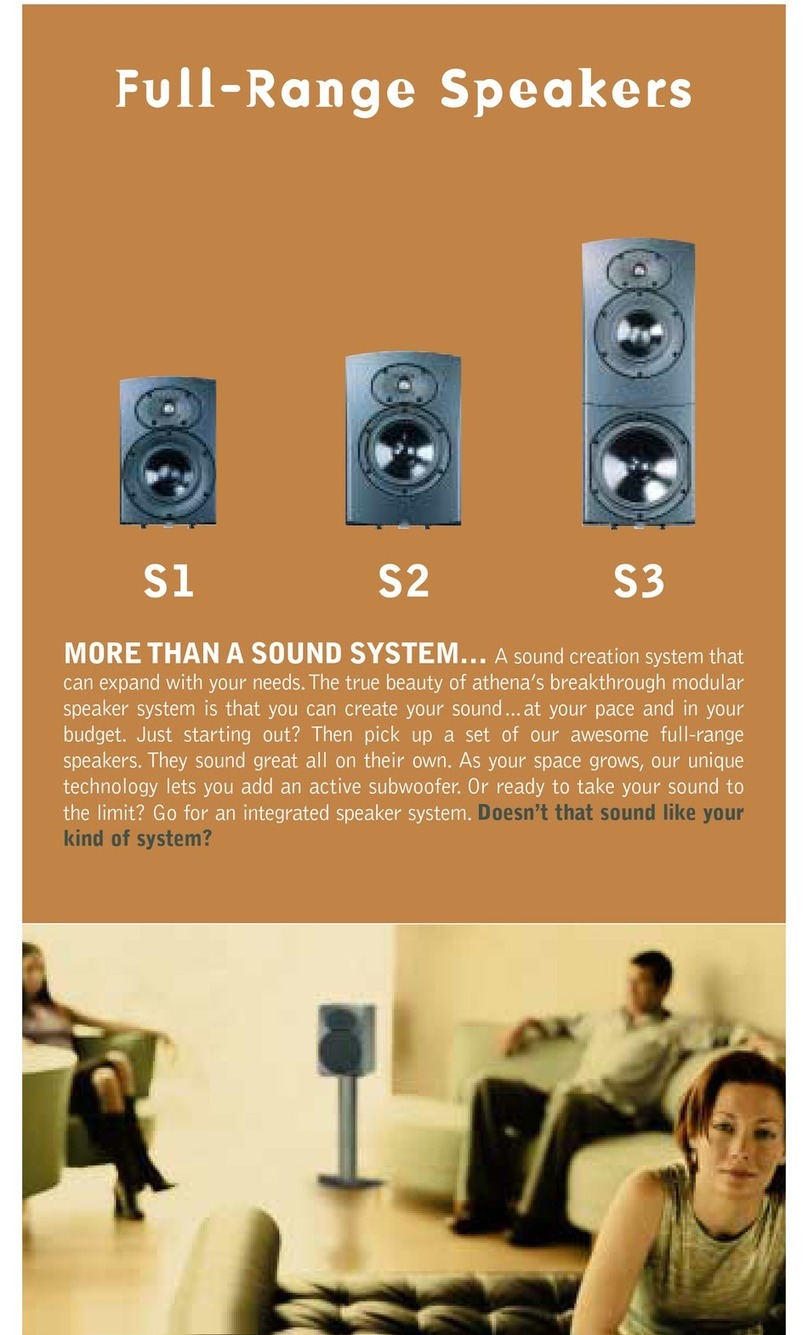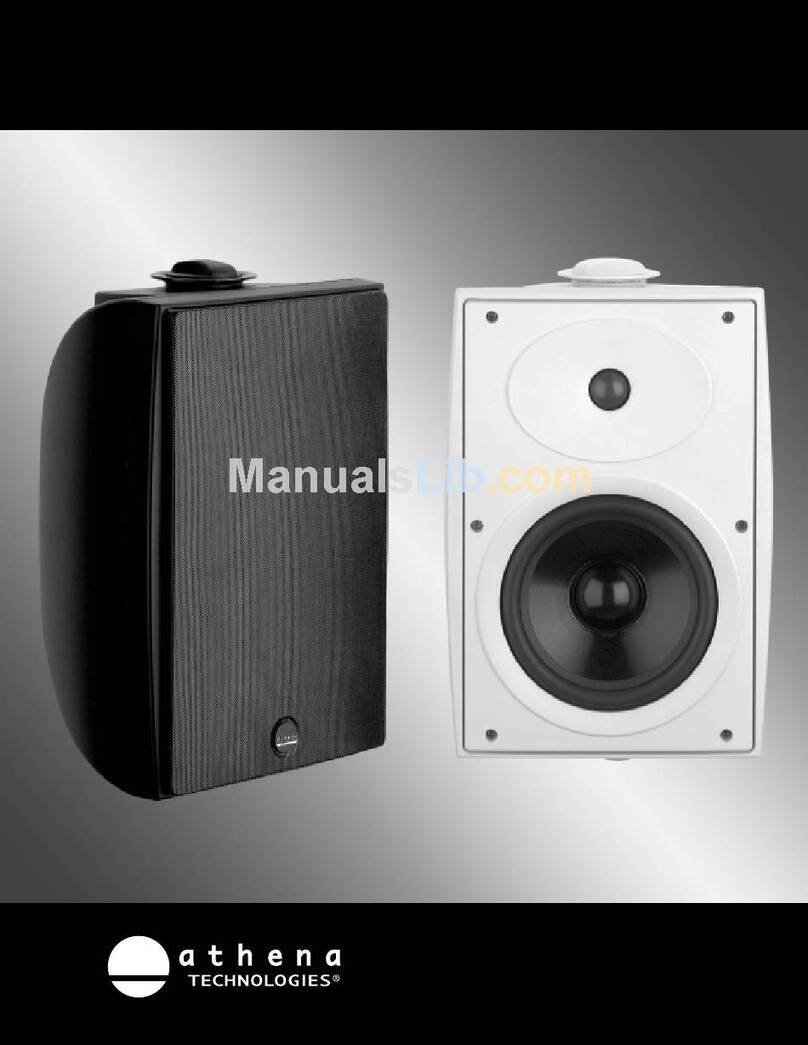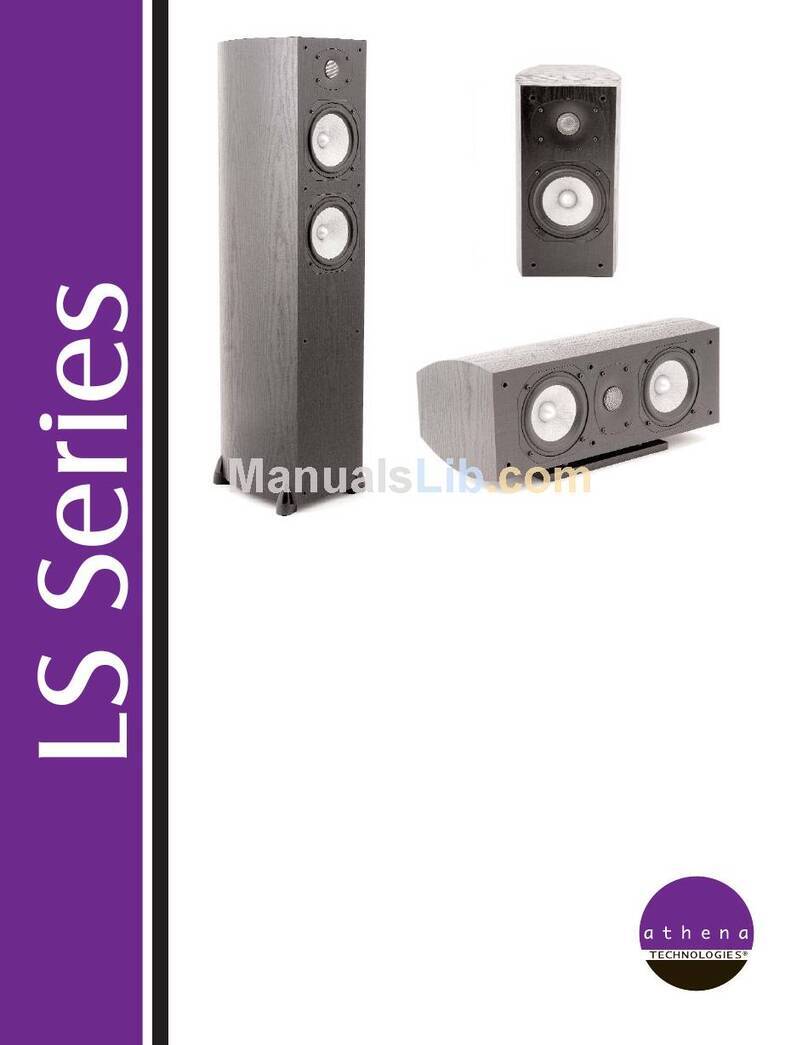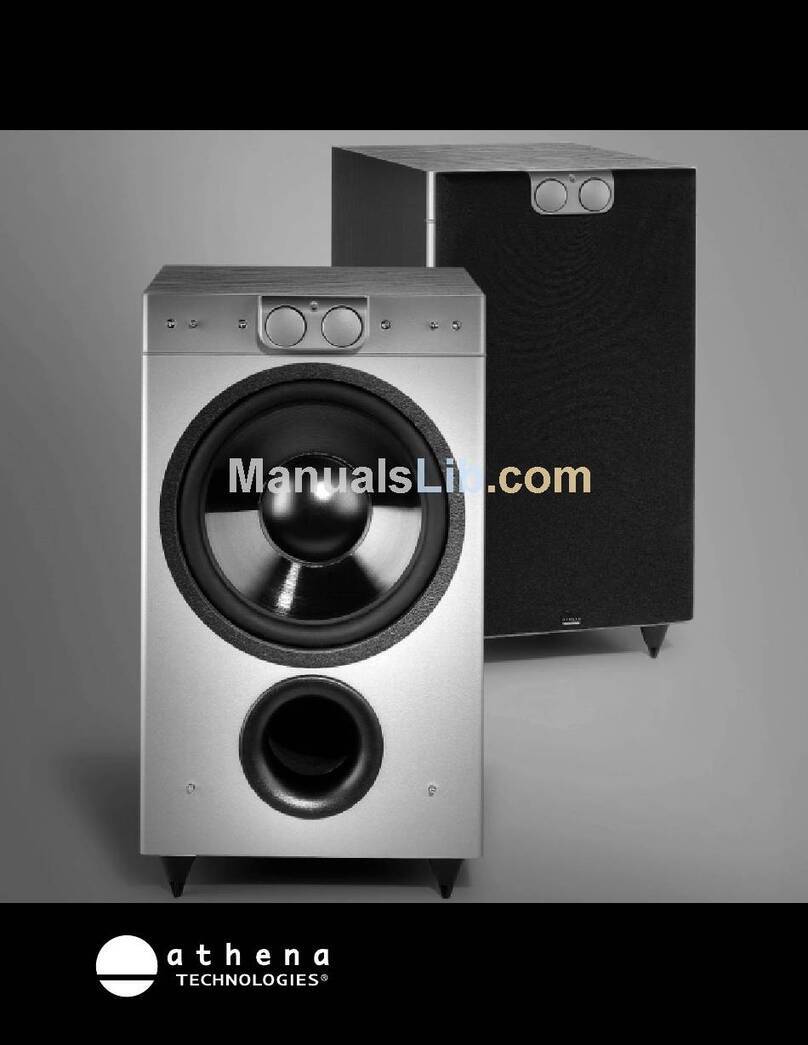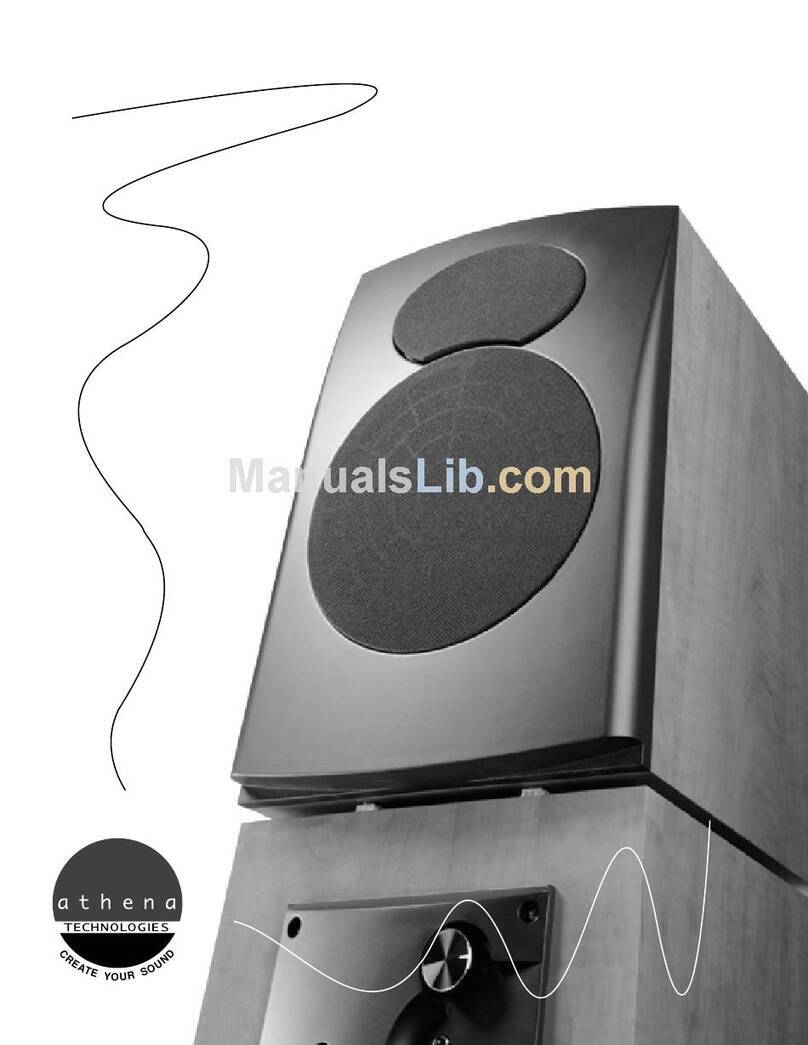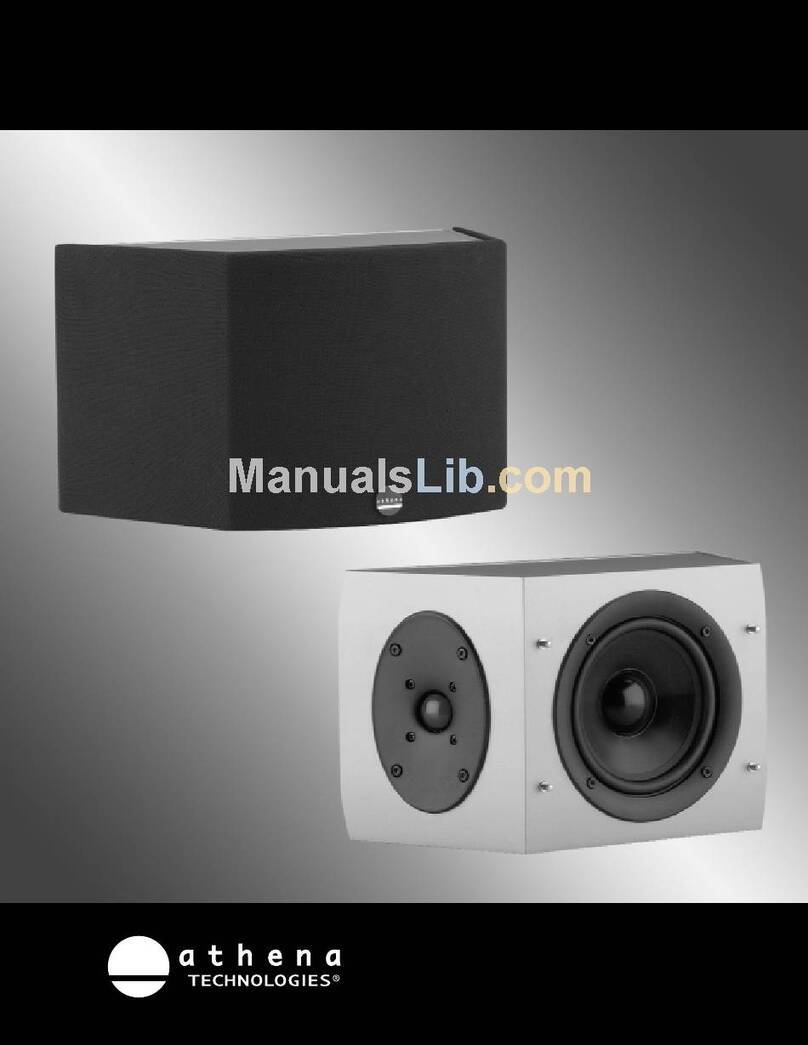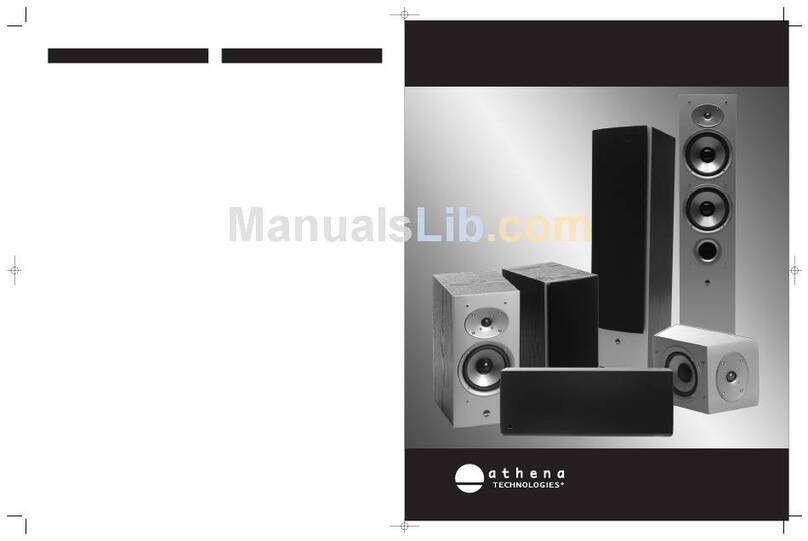IMPORTANTES CONSIGNES DE
SÉCURITÉ- LIRE
ATTENTIVEMENT !
Mise en garde : Afin de prévenir le risque de choc électrique, insérer àfond la lame la plus
large de la fiche dans la fente la plus large de la prise. Attention : l'appareil demeure sous
tension même s'il est hors marche.
Lire les instructions : Il est fortement recommandéde lire toutes les consignes de sécuritéet
la notice d'utilisation avant de faire fonctionner l'appareil.
Conserver les instructions : Conserver les consignes de sécuritéet la notice d'utilisation pour
consultation ultérieure.
Observer les mises en garde : Observer toutes les mises en garde apposées sur l'appareil et
contenues dans la notice d'utilisation.
Suivre les instructions : Se conformer àtoutes les instructions d'installation et d'utilisation.
Nettoyage : Débrancher le cordon d'alimentation de l'appareil avant de le nettoyer. Ne jamais
utiliser de produits liquides ànettoyer ni de nettoyants en aérosol. Nettoyer avec un chiffon
humide.
Accessoires : Afin de prévenir les dommages, n'utiliser que les accessoires recommandés par
le fabricant.
Eau et humidité: Ne pas utiliser cet appareil dans un endroit oùil pourrait devenir mouillé
(près d'une baignoire,d'un évier, d'un lavabo ou d'une piscine, ou encore dans un sous-sol
humide). Ne jamais placer un récipient contenant un liquide sur l'appareil.
Aération : Ne pas obstruer ou recouvrir les fentes et les ouvertures de l'enceinte ; elles
assurent l'aération et le bon fonctionnement de l'appareil et le protègent contre la surchauffe.
Ne pas placer l'appareil sur un lit, un canapé, un tapis ou une surface similaire. Ne pas placer
l'appareil dans une installation fermée telle une bibliothèque ou un meuble stéréo àmoins
qu'une aération adéquate soit assurée ou que les instructions du fabricant aient étéobservées.
Alimentation : Ne faire fonctionner cet appareil que sur une source d'alimentation conforme au
type indiquésur l'étiquette de marquage. En cas de doute, consulter le détaillant ou la
compagnie d'électricité.
Mise àla terre ou polarisation : Le cordon d'alimentation de l'appareil peut être muni d'une
fiche polarisée (fiche avec lames de largeur différente). Une telle fiche ne peut être introduite
dans la prise que dans un seul sens. Il s'agit làd'une importante caractéristique de sécurité. Si
la fiche ne peut être insérée àfond dans la prise, l'inverser et essayer ànouveau. Si cela ne
règle pas le problème, communiquer avec un électricien pour faire remplacer la prise. Ne PAS
faire échec aux fins de protection de la fiche polarisée.
Protection du cordon d'alimentation : Les cordons d'alimentation devraient être placés de
manière àprévenir tout risque d'écrasement ou de pincement par des objets. Apporter une
attention toute particulière aux points de connexion et de branchement.
Surcharge : Afin de prévenir tout risque de décharges électriques ou d'incendie, ne pas
surcharger les prises de courant ou les cordons prolongateurs.
Objets étrangers et déversement de liquide : Afin de prévenir tout risque d'incendie ou de
décharges électriques, ne jamais insérer d'objetd'aucune sorte dans l'appareil. Protéger
l'appareil contre tout risque de déversement de liquide.
Réparation : Ne pas tenter de réparer l'appareil soi-même ; le fait d'ouvrir l'appareil ou d'en
retirer les couvercles peut vous exposer àdes risques de décharges électriques. Confier toute
réparation àun technicien qualifié.
Sources de chaleur : Ne pas placer l'appareil àproximitéd'une source de chaleur telles que
radiateurs, bouches d'air chaud, cuisinières ou autres.
Période de non utilisation : Si l'appareil n'est pas étéutilisépendant une longue période,
débrancher le cordon d'alimentation.
Dommages nécessitant une réparation par un technicien qualifié:
A. La fiche ou le cordon d'alimentation de l'appareil est endommagé.
B. Des objets sont tombés sur l'appareil, ou il a subi un déversement de liquide.
C. L'appareil a étéexposéàla pluie.
D. L'appareil ne semble pas fonctionner normalement, ou son rendement
s'est modifiébrusquement.
E. L'appareil a étééchappé, ou son coffret endommagé.
F. Malgréla conformitéaux directives d'utilisation, l'appareil ne fonctionne pas
normalement.
NOTA : Suite àdes vérifications poussées, cet appareil a étéjugéconforme aux normes
relatives aux dispositifs numériques de classe B du FCC, partie 15. Ces normes sont
conçues pour assurer une protection raisonnable contre les interférences nuisibles dans
une installation résidentielle. Cet appareil génère, utilise et peut émettre de l'énergie
radiofréquence et, dans le cas oùil ne serait pas installéou utiliséconformément aux
instructions, peut causer une interférence nuisible aux communications radio. Toutefois,
il n'y a aucune garantie que de telles interférences ne peuvent survenir dans un endroit
donné. Dans l'éventualitéd'une telle interférence, ce qui peut être vérifiéen coupant
puis en rétablissant le contact sur l'appareil, il est recommandéque l'utilisateur tente de
remédier au problème en prenant l'une ou l'autre des mesures suivantes :
•Réorienter ou déplacer l'antenne réceptrice.
•Éloigner l'appareil du récepteur.
•Brancher l'appareil dans une prise ou un circuit autre que celui sur lequel fonctionne
le récepteur en question.
•Consulter le revendeur ou un technicien qualifié.
Veuillez lire attentivement toutes les instructions pour vous assurer que vos enceintes
sont installées de manière appropriée et qu'elles fonctionnent correctement. Conserver
le carton et les matières d'emballage en vue de protéger les enceintes dans l'éventualité
oùil deviendrait nécessaire de les expédier àun centre de service pour fins de
réparation. Tout appareil qui est expédiépar l'utilisateur dans un emballage autre que
celui d'origine et qui serait reçu endommagé, sera réparé, remis en état et emballépour
expédition aux frais de l'utilisateur.
AVANT-PROPOS
Nous vous félicitons d'avoir choisi les enceintes acoustiques athena TECHNOLOGIES®! Une
technologie exclusive et la haute qualitédes procédés de fabrication vous permettront de tirer
plaisir, de longues années durant, d'une restitution musicale aussi naturelle que précise. Les
conseils donnés dans ce manuel vous aideront àobtenir et àmaintenir un rendement optimal
et, par conséquent, une entière satisfaction. Veuillez donc lire attentivement toutes les
instructions pour vous assurer que vos enceintes sont installées de manière appropriée et
qu'elles fonctionnent correctement.
PÉRIODE DE RODAGE
Nous vous recommandons fortement de résister àla tentation de faire fonctionner
immédiatement les enceintes athena TECHNOLOGIES®àleur pleine puissance. Essayez divers
positionnements et faites de l'écoute jusqu'àce que les enceintes soient judicieusement
placées et bien rodées. Le processus est tout simple : mettez votre lecteur de disques
compacts en mode répétition et faites jouer un CD avec une dynamique étendue et àun niveau
d'écoute moyen, durant une période de 50 à100 heures environ.
athena TECHNOLOGIES®: UN BREF
HISTORIQUE
athena TECHNOLOGIES®est la plus récente division de Audio Products International Corp.,
sociétébien connue dans l'industrie sous l'acronyme «API ». Entreprise canadienne fondée
en 1975, API poursuit des activités de recherche, de développement et de production dans des
installations modernes de 165 000 pi2 situées àToronto (Canada). API figure parmi les plus
grands fabricants d'enceintes acoustiques au monde, et ses produits sont distribués dans
soixante pays. Toujours en quête de technologies acoustiques supérieures et novatrices, la
talentueuse équipe de recherche-développement d'API dispose d'instruments métrologiques
perfectionnés et d'outils évolués de conception assistée par ordinateur. Ses travaux s'appuient
sur des années de recherche de pointe en psychoacoustique, conjointement avec le Conseil
national de recherches du Canada (CNRC), en vue de concevoir des enceintes àhaut
rendement dans l'environnement d'écoute résidentiel type. Chaque aspect de l'enceinte fait
l'objet d'une analyse et d'une évaluation poussées avant même le début de la conception, une
approche que nous qualifions d'holistique. Cette méthode assure que les matériaux et les
composants de premier choix sont fabriqués et mis àl'essai au moyen de techniques avancées
de fabrication et de contrôle de la qualité. Aussi, n'est-il pas étonnant que leur performance
soit nettement supérieure àcelle d'enceintes vendues àdes prix beaucoup plus élevés.
AMPLIFICATEURS RECOMMANDÉS
Les enceintes Micra de athena TECHNOLOGIES®sont conçues pour démontrer une très grande
efficacité. L'ensemble des enceintes de la série est compatible avec une impédance de 8
ohms, permettant ainsi leur raccordement àpresque n'importe quel amplificateur ou récepteur.
La plupart des amplificateurs avec une puissance nominale de 20 W à100 W par canal seront
ainsi en mesure de prendre en charge les enceintes de athena TECHNOLOGIES®.
Mise en garde : Lorsqu'un amplificateur est surchargé, la distorsion résultante est en
fait plusieurs fois plus élevée que sa puissance nominale. Cette distorsion, appelée
écrêtage, est facilement identifiable par le son flou et distordu produit, et peut
irrémédiablement endommager un haut-parleur. La commande de volume sur la grande
majoritédes amplificateurs et récepteurs est de type logarithmique, ce qui signifie que la
puissance maximale peut être atteinte même lorsque la commande est en position
médiane. Les effets combinés du réglage du compensateur physiologique et des
commandes de tonalité–graves et aigus –peuvent amener la puissance de sortie bien
au-dessus des niveaux nominaux. Aussi, la garantie sur les enceintes sera-t-elle nulle
dans l'éventualitéoùles bobines mobiles seraient brûlées ou endommagées en raison
d'une surcharge ou d'un écrêtage.
L'éclair àextrémitéfléchée placédans un triangle équilatéral est
destinéàattirer l'attention de l'utilisateur sur la présence d'une «
tension potentiellement dangereuse »et non isolée se trouvant dans
les limites du coffret de l'appareil dont la puissance est suffisante
pour constituer un risque important d'électrocution.
Le point d'exclamation placédans un triangle équilatéral sert àattirer
l'attention de l'utilisateur sur d'importantes instructions relatives au
fonctionnement et àl'entretien (dépannage) dans le manuel qui
accompagne l'appareil.
manuel de l’utilisateur
4
